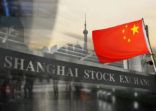Investing in cheap, high momentum or low volume equities, tactics that deliver a premium in developed and many emerging markets, does not show the same result in China’s A-share market, said Sunny Ng, head of portfolio strategists for Asia ex-Japan at State Street.
According to State Street research into A-Shares, which was in the Journal of Portfolio Management, investing based on size, volatility or momentum didn’t show much of a premium above the MSCI China index over time.
But value and yield investing were significantly attractive. “Buying cheaper and high yield stocks outperformed the general market index over time,” Ng said.
“It’s not a good strategy to simply passively invest because A-shares tend to underperform for a long time. They do [eventually] show a premium, but only over a certain time and that’s because of huge tail risks.
“It means idiosyncratic risk in China – single stock risk — is very big.
This is supported by data on the MSCI China, where the average monthly return from 2002 – 2014 was 1.3%, but the distribution of returns was far from normal.
Beta insignificance
In China’s A-share market, beta doesn’t really determine stock returns because it is not significant, Ng said.
“Beta of the market as a whole does not explain the risk of individual stocks. That’s unique to China’s A-share market versus other markets in world, where market beta is essentially the most important driver of stock returns,” Ng said.
His conclusion is that “there is strong evidence that quantitative investing in China A-shares works. It could be helpful in stock selection. Mean reversion does apply and valuation does matter. That said, there’s a lot of tail risk in China and you have to be smart and forward looking in your approach.”
How do you use this information to build portfolios?
The firm advocates a pragmatic approach to the A-share market. “using factors and traditional stock analysis to build alpha portfolios”, he said.
“Fat tails and non-normal distribution of returns in China A-shares market makes it challenging to employ passive strategies.”
The China A-share market has been a top performer over the last three years, but it has significantly different characteristics than the other markets, according to State Street research.

















